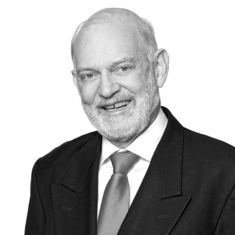The COVID-19 Omnibus (Emergency Measures) (Electronic Signing and Witnessing) Regulations 2020 were introduced on 11 May 2020 and can be accessed here. These were issued following the introduction of the COVID-19 Omnibus (Emergency Measures) Act 2020 in response to the COVID-19 pandemic.
The Regulations will have effect for a six month period and provide alternative methods for signing and witnessing documents during the COVID-19 pandemic period. The Regulations apply from 25 April 2020 – 25 October 2020. The changes will make it significantly easier to sign documents whilst maintaining physical distancing during the pandemic period.
The changes do not limit existing methods of witnessing documents, so long as witnessing that is carried out in person is carried out in safe circumstances in accordance with Government restrictions.
Below is a brief summary of the changes to relevant legislation, however we recommend seeking further legal advice if you are unsure how to comply with the changes.
Oaths and Affidavits Act 2018
Where the Oaths and Affidavits Act 2018 requires a signature, an electronic signature will now be permitted. This applies to statutory declarations and affidavits. If a person is required under the Act to do something in front of another, they are permitted to do so via audio visual link. The effect of this will allow witnesses, deponents and affidavit takers to comply with the Act without needing to be physically present. Furthermore, where the Act requires an original copy of a document to be signed, signing a scanned hard copy, or an electronic copy of a document will satisfy the requirements.
If an affidavit taker signs the document electronically, or witnessing is done via audio or audio visual link, the affidavit taker must include a statement in the jurat that indicates the document was signed electronically, or was witnessed via audio or audio visual link in accordance with the Regulations.
Furthermore, if a person cannot comply with the requirements, the court may nonetheless admit the document into evidence if they consider it to be in the interests of justice. The document must include the reasons why it was not practicable to comply with the Act, but this is ultimately a decision of the Court whether or not to admit the document.
Powers of Attorney Act 2014
Enduring and non-enduring powers of attorney can be executed and witnessed by audio visual link, if the requirements set out in the Regulations are followed. However, all witnesses must still fulfil their existing obligations under the Act. These Regulations do not apply to Advanced Care Directives or to appointments of Medical Treatment Decision Makers.
If a witness observes the signing of a Power of Attorney remotely, the following steps must occur:
- the principal, or person directed to sign, signs the document whilst any remote witness observes the signing via audio visual link.
- if there are any witnesses physically present, they must sign the document.
- a copy of the document is then transmitted to the remote witness.
- the witness may then sign the document electronically, or sign a hard copy.
- the witness must write on the document that it was witnessed in accordance with the regulations.
- if there are any further remote witnesses, the document must be transferred to the next witness.
- once all witnesses have signed, the document must be returned to the principal or directed signer.
- this person must then write that the copy is a true copy of the Power of Attorney in accordance with the Regulations.
The end result will mean that there is one copy of the Power of Attorney that has all signatures and statements of the witnesses. The above steps must all occur on the same day.
Where the above steps refer to ‘transmission’ of the document, the Regulations state that the method of transmission does not matter. For example, a document may be transmitted by emailing, faxing, or scanning it to the required party.
Wills Act 1997
The execution, alteration and revocation of a will by a testator that must generally be done in the presence of a person may now take place if parties are present by audio visual link. The steps that a witness is required to fulfil are:
- the testator signs the document.
- if there are any witnesses physically present, they must sign the document.
- a copy of the document is then transmitted to the remote witness.
- the witness may then sign the document electronically, or sign a hard copy.
- the witness must write on the document that it was witnessed in accordance with the regulations.
- if there are any further remote witnesses, the document must be transferred to the next witness and the above process repeated.
- once all witnesses have signed, the document must be returned to the testator.
- the testator must then write that the copy is a true copy of the will in accordance with the Regulations.
Deeds and mortgages
The Regulations also allow for electronic signature in relation to deeds and mortgages. The changes allow each signatory to sign either the document, or a copy of a document which may be either electronic or hard copy. The changes also allow witnessing to occur via audio-visual link where required.
Where a person signs electronically, they must include a statement to the effect that the document was electronically signed in accordance with the Regulations.
A person witnessing the signing of a document must also include a document to indicate that it was witnessed by audio-visual link in accordance with the Regulations.
The person who will receive the document is required to give their consent that the document be executed electronically. However, the fact that a person proposes to electronically sign a document is not a sufficient reason to withhold consent under the Act.
Need more guidance?
If you would like to discuss anything mentioned in this article, or need guidance or assistance to ensure compliance with the changes, please contact us for further information.
Emily Clapp
Graduate-at-Law










